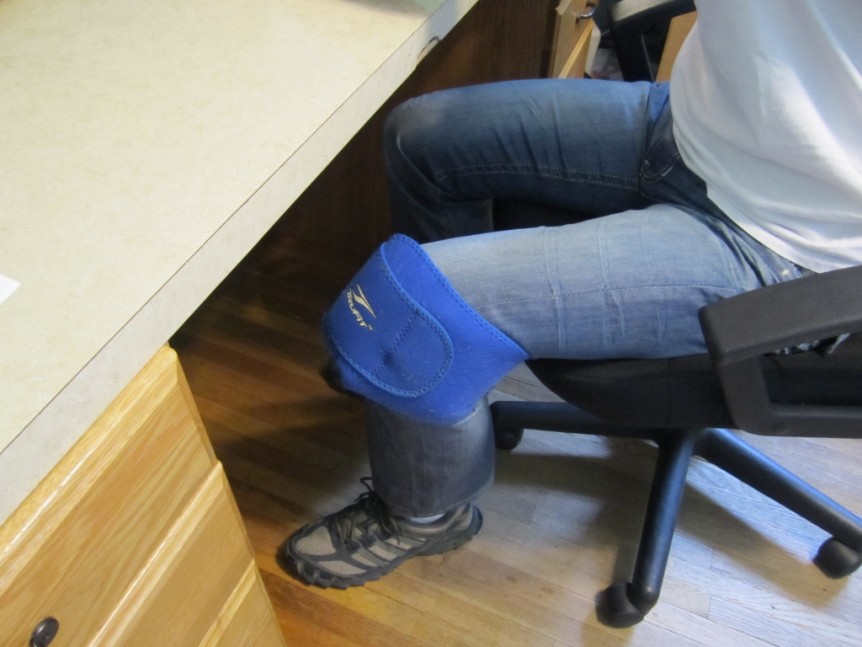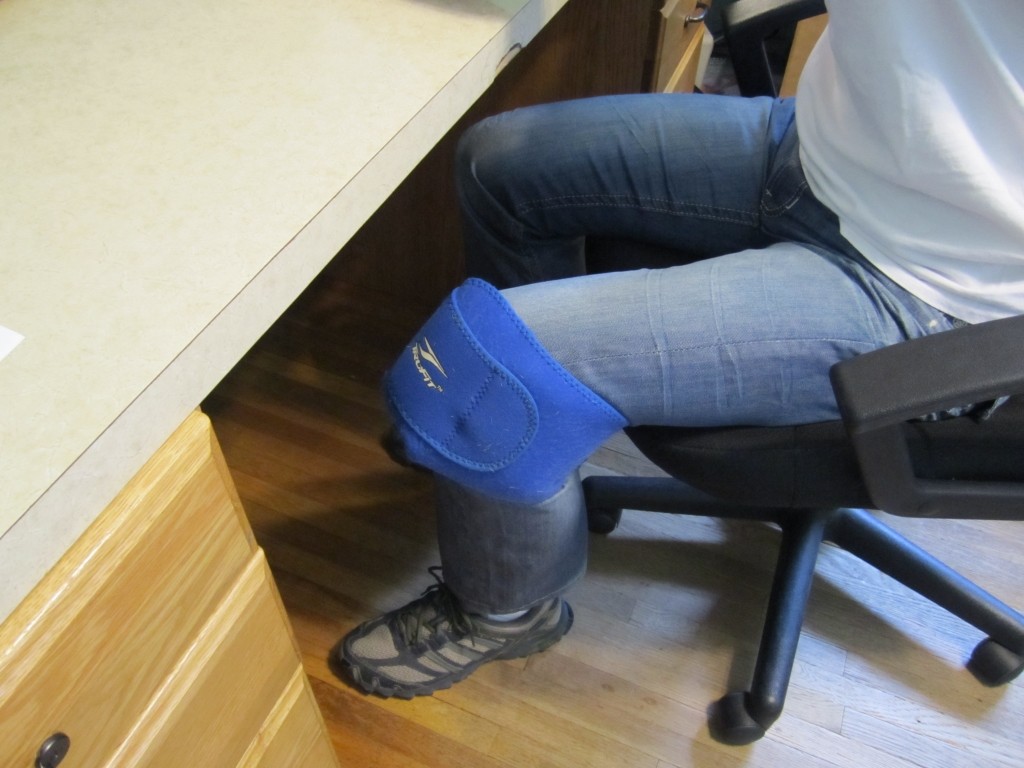Ice is life’s most under-recognized drug and it needs no prescription. It’s right there in your freezer waiting for you. It’s easy to apply to an injury and quick to start working.
When an injury occurs, immediate application of ice constricts the capillaries to help prevent bleeding and swelling in the injured and creating a bruise. The use of ice decreases the need for anti-pain medication because it is a surface stimulant that overrides the pain in the injured area. Ice slows nerve conduction velocity. In other words, ice shuts down many nerve impulses that your brain interprets as pain.
Apply lavish amounts of ice to your injury and the area surrounding it. Use a large ice bag, a bag of frozen peas, or a gel ice pack – anything you have that will act as ice. Leave the ice in place ten to twenty minutes, then remove it and place a dry towel around the cold skin until you feel the area thaw. Wait thirty minutes and then apply the ice again. Ice off and on as often as possible during the first two days after the injury, then reduce this treatment to twice a day until the injury heals.
In treating neck and back, ice is applied to alleviate pain, spasm or inflammation even though the initial discomfort of the cold may give the impression of stiffening the muscles. Stay relaxed, stay with it, and the ice treatment will force the muscles in spasm to relax and return to their normal resting length.
One of the main reasons people “forget” to ice is that they don’t want to sit still to do it. Now there is no excuse. You can use ICE/HEAT by TRU-FIT. This product consists of a freezable gel pack, insulated soft fabric wrap, and an elastic extension strap. The strap holds the gel pack in the most desirable position over your knee, hip, back, shoulder or other injury site. You can wrap the ice bag snugly around any injury and continue your daily activities at work or at home. So while you cook dinner or write your daily blog, you can strap on some ice and speed the healing of your injury – not bad multi-tasking!
Once you are past the first forty-eight hours of your injury the gel pack can go into the microwave and be heated to offer contrast treatments – first cold, then heat, then finish with cold.
Lynda Huey, M.S., founder of CompletePT and Huey’s Athletic Network, is a former athlete and coach whose own injuries led her into the water to find fitness and healing. She was educated at San Jose State University where she starred on the track and field team during its golden years.


